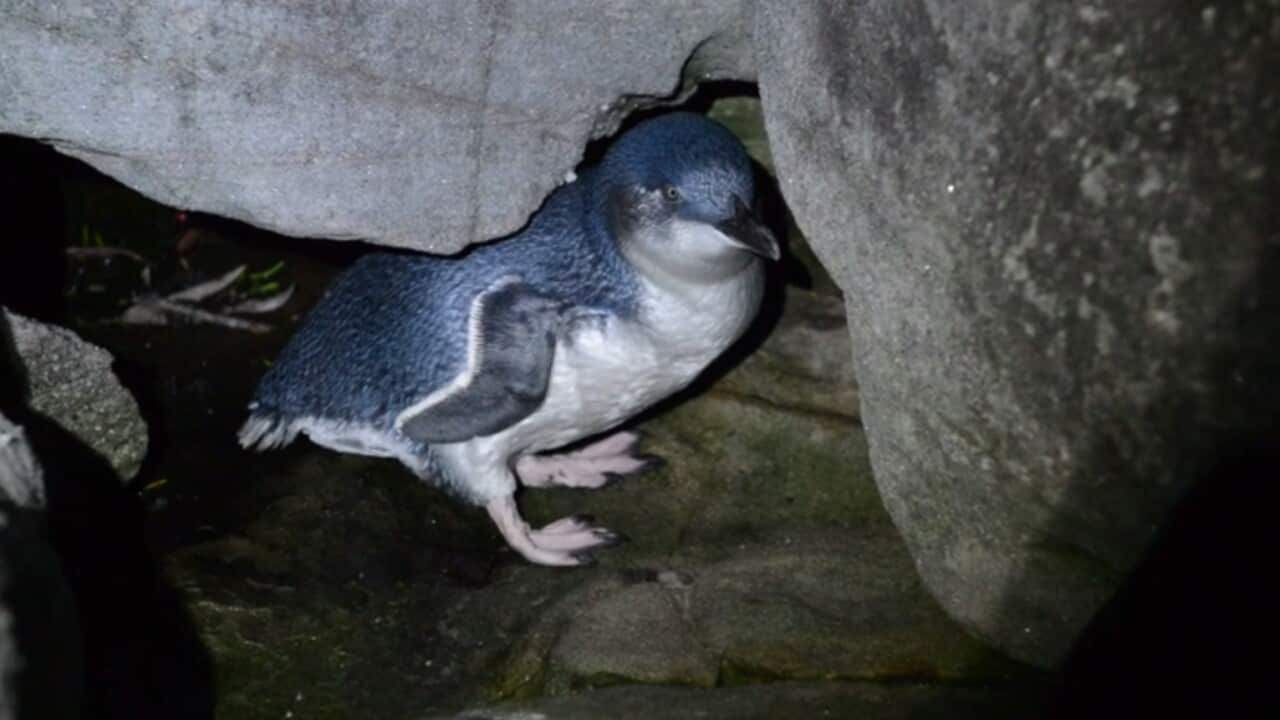TRANSCRIPT:
Murray Sharp has spent twenty years protecting a small colony of Little Penguins.
You’ll find him patrolling a secluded beach in Sydney, cleaning up rubbish and talking to locals.
“What we’re doing is everything we can to protect the current habitat and population. There's lots of education going around.”
Little Penguins are native to Australia and New Zealand.
They are found along the southern edge of the country, with the largest colonies on Kangaroo Island and Phillip Island.
But in Sydney, the population is endangered.
“Well, in the early days we had a quite healthy population of about 60 to 65 breeding pairs and now unfortunately that's dropped to about 19 breeding pairs."
Mr Sharp says just one major event could completely wipe out the population.
“I think not only for me but for the community, it would be very sad.”
That major event could come as soon as spring - through migratory birds, with virologists like Associate Professor Kirsty Short warning a deadly strain of bird flu could reach Australian shores.
"I think it’s something that is a very very real possibility and a very real threat to Australia’s biodiversity. So it's something that we really need to be planning for and preparing for the worst-case scenario."
So, what is bird flu?
"Bird flu is a subset of influenza virus which we’re familiar with because it causes the flu every winter, but bird flu refers to a subset of these viruses that circulate primarily in birds."
And much as with COVID variants, the same thing is happening with strains of bird flu.
The global outbreak is being caused by the H-5-N-1 strain and Associate Professor Short says it’s spreading through birds extremely quickly.
"We’ve also seen an unusual number of spillovers of the infection to marine animals and now what we’re seeing for the first time is in the US this virus has spread into dairy cattle. So in many ways it's not acting like a typical avian influenza virus."
Australia is the only continent free of the strain likely due to its geographical isolation, but that also makes its wildlife vulnerable.
Without being exposed to many strains of the virus, they’re unable to build up immunity.
Scientists have undertaken susceptibility testing with Australia’s native black swans and Associate Professor Short says the results are worrying.
"They found that the black swans really had basically 100 per cent mortality…A lot of the data we’re depending on in this field comes from the northern hemisphere and of course they don’t have the same species as us so we’ve never really investigated this, so it really is a priority for further research."
Australia has avoided the strain for a couple of years now but advocates like Jack Gough, from the Invasive Species Council, says preparation efforts will have to be stepped up.
"Last year we were lucky but luck is not a way that we want to approach something when we are talking about bird deaths, wildlife massacre, on the scale potentially of the Black Summer Bushfires."
Overseas, in countries like Argentina, unprecedented numbers of elephant seals and sea lions have died.
Last year, the mortality rate of elephant seal pups in Argentina’s Peninsula Valdes reached 95 per cent.
Urban Bird Program Manager Holly Parsons, from BirdLife Australia, says Australia needs to use that information to get ahead.
"We can learn from our international partners about what has happened elsewhere and adapt to Australia. We have the time to prepared but now is the time to be acting."
Mr Gough agrees.
"Overseas we’ve seen that picking up dead birds when this turns up has reduced death rates by 15 to 80 per cent. But that requires people on the ground to know about it, people to be prepared and having that response in place."
He’s also calling for the government to look into localised planning and vaccination options for native wildlife.
The federal government has set up a dedicated taskforce to lead national preparedness planning and is undergoing a national exercise to test Australia's readiness.
It’s also invested nearly $7 million into bird flu preparation, though Mr Gough says it’s not enough.
"Let’s be clear that $7 million was mostly just re-announcements of funding they put in place and there is only $580,000 for preparation for this deadly bird flu when it comes to our wildlife. It might not turn up this Spring, but we do know that if it does turn up that Australia right now is not prepared."













